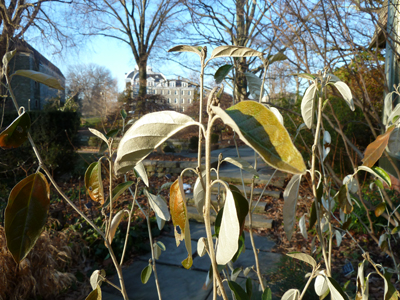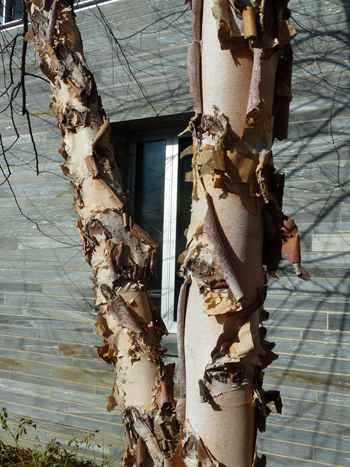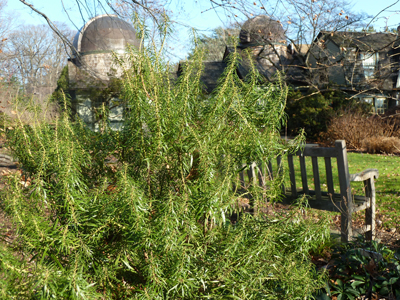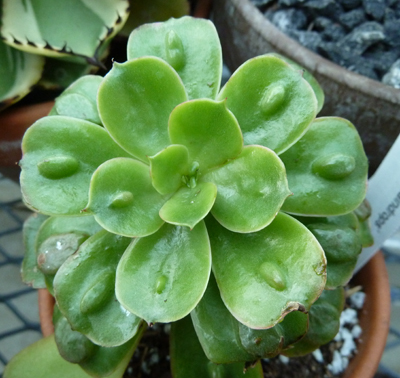Plants of the Week – January 7
 Croton alabamensis, or Alabama croton, is an atypical member of Euphorbiaceae. The semi-evergreen shrub is, according to Mulberry Woods Native Plant Nursery and Farm, a rare but easy-to-grow shrub indigenous to four counties in Alabama, frequently in poor soils along river bluffs. Small, spurge-like lemon yellow flowers open in spring. Perhaps the most endearing attribute of Croton alabamensis is the shiny silver undersides of the leaves. A hidden trait, the undersides are often revealed by summer winds or freezing temperatures which cause the leaves to droop. Photo credit: J. Coceano
Croton alabamensis, or Alabama croton, is an atypical member of Euphorbiaceae. The semi-evergreen shrub is, according to Mulberry Woods Native Plant Nursery and Farm, a rare but easy-to-grow shrub indigenous to four counties in Alabama, frequently in poor soils along river bluffs. Small, spurge-like lemon yellow flowers open in spring. Perhaps the most endearing attribute of Croton alabamensis is the shiny silver undersides of the leaves. A hidden trait, the undersides are often revealed by summer winds or freezing temperatures which cause the leaves to droop. Photo credit: J. Coceano
 Betula nigra Heritage® shines in the winter landscape. A personal favorite is the specimen planted near the Kemp and Alice Paul dormitories. There the exfoliating bark, curling and peeling off in sheets, is a strong visual contrast to the flat stone of the buildings around it. Another dramatic grouping can be found near the sculpture Slide Rock and the Swarthmore SEPTA station. Photo credit: J. Coceano
Betula nigra Heritage® shines in the winter landscape. A personal favorite is the specimen planted near the Kemp and Alice Paul dormitories. There the exfoliating bark, curling and peeling off in sheets, is a strong visual contrast to the flat stone of the buildings around it. Another dramatic grouping can be found near the sculpture Slide Rock and the Swarthmore SEPTA station. Photo credit: J. Coceano
 A casual glance at Pieris japonica ‘Pygmaea’ would likely lead one to believe it is a conifer. The evergreen shrub is covered in small, narrow feathery leaves less than an inch in length. Plants are very slow growing, typically reaching 2 – 3’ in height. Small clusters of flowers, typical of the genus, appear in spring. Photo credit: J. Coceano
A casual glance at Pieris japonica ‘Pygmaea’ would likely lead one to believe it is a conifer. The evergreen shrub is covered in small, narrow feathery leaves less than an inch in length. Plants are very slow growing, typically reaching 2 – 3’ in height. Small clusters of flowers, typical of the genus, appear in spring. Photo credit: J. Coceano
 I was excited to procure Echeveria ‘Raindrops’ to add to the succulent collection. This hybrid is noted for being one of the smallest of the bumpy-leaf cultivars. Rounded leaves sport reddish margins and a curious singular, globular blue-green bump in the middle of each leaf. Echeverias are ideal for container culture and are fun added to any warm season container grouping. Photo credit: J. Coceano
I was excited to procure Echeveria ‘Raindrops’ to add to the succulent collection. This hybrid is noted for being one of the smallest of the bumpy-leaf cultivars. Rounded leaves sport reddish margins and a curious singular, globular blue-green bump in the middle of each leaf. Echeverias are ideal for container culture and are fun added to any warm season container grouping. Photo credit: J. Coceano





No Comments